What Fun Our New Pawpress Author Chester L. Richards and I Had at the DPA pre-Emmys Swag Bag Event A day full of laughter and conversation at the DPA pre-Emmys event before the BIG NIGHT. So many special moments. Kandi Krush, on client and friend Chester L. Richards' right, in the Lady Wrestlers from Total Divas pic, impressed him with the firmness of her grip. Being surrounded by the bevy of beauties connected with the show...well, as a friend told him, he was clearly livin' the good life.
I had a fun back and forth with actor William Sanford Davis, of the swell best comedy nominated Abbott Elementary. He was attired in pristine white ripped jeans. I complimented him and asked with a slight smirk, "Did you create that design?" He told me his mother would have taken one look at him and said, "You paid money for those jeans?'" Just like my grandmother. Lovely moment in time. When I realized I was talking to not just your average guy with a dog in a fancy hotel, but the creator of Ozark, Mark Williams, the writer in me was overcome. Told him how hooked I'd become. Though at first I'd been turned off by how dark the show seemed, my daughter kept telling me it was must-see. So I tried again, and in case you are one of the three or four people on the planet who hasn't seen Ozark, this is for sure binge TV. It was informative and fun talking with Mark a bit about his work on the show (he has a finely tuned sense of wry) , and what he sees coming in the world of The Biz. Then there's Better Call Saul, yet another binge-worthy series of course. The show's masterful Giancarlo Esposito and Chester had a deep personal conversation. A bit I caught before stepping away to give them privacy was the actor's surprise that the author knew how to spell Giancarlo. Chester told him it was easy. His mother's family was from Sicily. Gotta tell you I was totally thrilled to meet Alex Borstein. Her character is just phenomenal in The Marvelous Mrs. Maisel, which is so well done in every respect. Story, character development, writing, acting, set design, costumes, editing, all that goes into production, and the entire cast. What a treat to meet this particular fave actress. Christopher McDonald, the acting veteran up for his role in the terrific show Hacks, loved Chester's story about his involvement with Star Trek, and they, too had a lively conversation. And of course the show's leading lady Jean Smart carried the day with her knockout acceptance speech. The people whom we met were a diverse lot indeed, and all had their own fascinating stories of course. Chester's proud to say many seemed genuinely intrigued when hearing about the tales in his book. Looked that way to me. In fact, that stack of books had greatly dwindled by day's end. Will be showing more photos and sharing more stories soon, both here and on Chester's Site. From the author two days before the 2022 Awards were announced and presented: "What an eye-opening experience. Another adventure. My editor tells me I'll be writing about it one of these days. Meantime, wishing luck tonight to the brilliant nominees." #dpasuites #awardsseason #dpasuites #nominees #presenters #giftbags #moviestars #entertainment #BCE #booksthatmakeyou DPA GROUP #booksignings #KandiKrush #LanaStar
0 Comments
All were looking for a way to figure out how to really get going on a book they've had in mind, but somehow have not been able to bring to fruition.
We spent time with each person, reviewing reasons why one or another of the books banging them upside the head weren't really taking shape. Turned out, it was usually more than one book each person had been thinking about, sometimes for years. Does this sound at all familiar? Have you got three or more books you've started to write, put down, picked up again maybe once a year? Have other books jumped up and demanded you tackle them, now? You are not alone! Ask yourself these questions:
Think about your answers. The solution to which book to start with should become clear. My main point is this. Put your focus on one book at a time. That does not mean the other books won't intrude and want to make themselves heard. Be kind to them. Write down a few notes that they're whispering in your ear, put them in a separate file, and then go back to the one you have selected to do first. Then what? Keep writing. On the chosen book! Stay focused. Make dates with yourself to write regularly. Carve out a time. You deserve it! Yes, you can fit in other parts of your life. They're important! But stick with your promise to yourself. Write. Then watch the pages mount up. If you would like concrete ideas on how to stay motivated, how to keep yourself in that chair, how to keep the focus on one book at a time, and how to make that book richer and a better read, join the workshop I'm starting at the end of July! We'll be working with folks who have picked a book to really dive into. And want to take it to the next level. For dates, times, other info, and sign-up use the button below. At the end of the Jump Start Your Book workshop, the path seemed clear for attendees. And now, I'm looking forward to seeing progress as these people hone in on the book that makes the most sense to start with. And you, too, if you were not at our June 17 Jump Start Your Book! event. This is a limited seating series, and a few seats are available for those who have not attended but have a book they want to develop further.
of twisting or turning would allow me to push the end back through the opening it had mysteriously wandered through to make its conspicuous lump. Frustrated, and not willing to force the chain for fear of damaging it, I put the necklace down by the door. I'll bring it to a jeweler, I thought.
Fast forward to this morning. An agreement I'd been working on for a new project had a couple of deal points I was having a bit of trouble nailing down. I'd emailed the draft to the lawyer involved. A couple of days ago... In keeping with our times, I left him a voicemail and email yesterday with the questions, asking if we could discuss "in the soon." This morning he called at around 10. We hashed out everything, and it all seemed to fall into place. For some reason I went to the door. And picked up the necklace. What you see in the picture is how it appeared. I've had some wonderful adventures with serendipity, and physical changes in objects for no standard reason (looking at a previously non-working appliance – no, not a microwave – thinking "Work!" and having it suddenly perform perfectly, for example). But a sudden untanglement, with no physical cause, this is new. I love it! Just Write! Or, How to Go From One Blank Page to a Full Manuscript without Tearing Your Hair Out6/24/2016 I wrote about breaking through writers block back in 2011. But it's such a recurring theme I wanted to post an update, with some new "why I can't write" protests, and tips on why, and how, you can write. Blame the students in my Monday morning memoirs class, who expressed frustrations along these lines. But here's the thing -- when I talked to them about ways to move on, there was a palpable change in the room. A huge sense of relief, and excitement.
This is how the discussion started. Seem familiar? "I'm afraid to write about my life. If I go into the feelings, I won't be able to deal with it...Too much pain. I just don't want to go there." Then there was damned if you do and damned if you don't: "I want to write my memoir, but I'm afraid that if I get into the story, hours will go by and I won't be able to get anything done. That happened to me recently. I started to write, looked up at the clock, and it was three hours later. I can't afford that kind of time! I promised to do things for my husband, and other people, and I have laundry, shopping...." So, here's what I said to the first issue. I know it's hard to write about painful memories. But once you get them out on paper (or computer screen), you'll feel so much better. It's really cathartic. Writing is a recognized technique for overcoming the pain of loss. There is much written about this in the literature of social services and psychology. I'd used the technique in my Grief Lifters classes. So I'd also had experience helping others release pain through writing. Several in the class nodded when I mentioned the power of writing to help ease the pains of old hurts. One long time class member and I recalled Kay. A wonderful writer, not suffering from a block, but she did feel pain, acutely, when writing some of the stories of her life. She, and the rest of us, learned that the first time she read one of these tales, she'd cry. The second time, the crying would happen, but less of it. The third time, no tears. The same thing happened over and over. Kay knew how healing it was for her to write these memories down. And so did everyone else in the class. A lesson they applied to their own work. Another member had lost his wife. Writing helped him get through the pain. And it had another benefit. It brought him close to two of his estranged daughters. They'd never known how much he cared for their mother; he was schooled in the "Don't show your emotions" school of family life. But when they read these stories, his kids all realized that indeed, he loved his wife very much. One other, important benefit of writing about painful experiences. The way you got through them can help those who read your stories. Perhaps you'll be able to show them a technique for coping that helped you. And just the fact that you got through it can buoy a reader's spirits. I also told the class a story about one of my own experiences. I was in a relationship with a fellow, and it was quite serious. Then one day he didn't show up. Something told me he never would. And I was right. I was in such pain when I realized this that I jumped into my car, with no idea where I was headed. This was Carmel. Beautiful area, with small towns and roads right on the Pacific coast. A spot in nearby Pacific Grove called out to me. I parked, sat, and stared at the ocean. Somehow I'd taken a yellow pad and pen. I picked them up and started to write. One hour later, the tablet held twelve pages of hardly crossed out handwriting. I began to read. "You know I'll never hurt you," my former lover said to me in the first line. Reading all the pages, as if outside myself, I morphed into a reader of someone else's prose. "Not bad," came to mind. I realized this was the beginning of a book. And that clearly the process of writing had defused the pain. Once people realize how useful writing is at getting over deep wounds, it becomes easier and actually logical to just dive in. I encourage you to try it. Please let me know how it's going for you! Comment here or send me an email. On the second issue, "I'll get lost in the writing and won't be able to get anything done -- promises I made to others, or chores for myself" -- here was my reply. This is a common roadblock people throw up to keep from putting pen to paper. But you do not have to lose yourself in your writing. You can set a time limit. Also, while we all make promises to other people, it's important to do things for ourselves as well. Remember, the writing is something you want to do, for yourself. You've stated that you want to get your stories down so that others in your family will know what you've done in your life. Some of you want to get your stories published, and perhaps performed. How to avoid being swallowed up? Try using a timer. Figure out what amount of time is right for you. Can you give yourself one hour a day? Or one or more hours once a week? This has to be sacred time. Nothing can interrupt. Think of it as a gift and a promise you are giving to yourself. You deserve it. Whether you've had either of these reasons to keep from starting or keeping on, or others, you'll find that once you start, you'll want, and even need, to keep on going. Persistence really does pay. The pages will pile up. If you just write.
Here are a few articles on the subject:
Psychology Today Forbes The Atlantic The other good thing about exposing yourself on paper is your readers will admire your honesty. The writer who is not perfect is human. Someone with whom a reader can honestly identify. When I wrote my first book, Pawprints, I was quite pleased when friends remarked, "I can hear you talking as I read these stories." But I was actually surprised and a bit uncomfortable myself when people added, "I know so much more about you now," with a kind of knowing look. Ouch! But, the fact that I did reveal personal vignettes did much more for me than to me. Pawprints became an Amazon.com bestseller, and developed into a literacy program. And readers liked me! Now, does this mean you have to tell everything? No. If you will really hurt yourself or someone else, consider whether or not it is such an important point that you must reveal all. If so, the other people who are afraid they might be tarnished by association, or whose secret you are telling, will just have to get over it. This is particularly true within families. There are always skeletons and everyone is afraid of letting them jump into the light. But, as the research shows, these secrets are harmful to everyone, and it really may wind up helping all involved if the cat is let out of the bag. Thinking over your life for your memoir will bring to mind these secrets. And while it is a good thing to put some into print, there are valid reasons when other avenues at clearing the air may be a better choice. A woman who came to me about a project had experienced the family secret issue. A relative was trying to urge her to have sex with his friends, who were strangers to her. Why? Probably because he thought "free love" was healthy. She was so offended, and upset, that she chose to ostracize him, and never re-opened the door to the man again. The rest of the family knew nothing of this. They were all very upset with her. In talking about her project, we discussed this issue in depth. The conclusion -- it would be too hurtful for the family to include the episode and its aftermath in her memoir, and it was not critical to the portion of her life about which she was writing. But it was important to talk to others in the family once he had died. They needed to know why she had seemed so ill mannered, to say the least. The result? Suddenly, the family understood her behavior. They wound up embracing her warmly. Family bonds were re-attached. Another time you might opt not to include such a secret is if you might wind up getting hurt, for example kneecapped, as one lady who came to me for advice might have. In this case I also advised not to reveal the secrets.These were not about the author, but about characters she would include. The woman with the story had been married to a man who was famous in a field that was riddled with mafia. It would have been very dangerous for her to expose their behavior. On a related note, is it OK to write stories about celebrities you might have encountered? In general, the rule of thumb is, if it really happened, it is not libel (“slander” refers to telling the story orally) and you can write it. Celebrities are also considered public figures and as such are “fair game” for irony, or for stories that involve something you witnessed – as long as it is not degrading or defamatory. They are not, though, fair game for mean spirited, untrue stories. Again, if it is not true, you better watch out. Here are two resources online to check out the legalities involved. Findlaw.com Nolo The short answers: Use dialog to signify moods/feelings. Or, as an example of making words bounce off the page, Pepper Your Life Stories with Dialog to Add Zing Life story writing certainly begins by describing events and people we have encountered, but how do we make these stories more than just a -- sorry, the word is dull -- recitation of facts? And an equally dull series of descriptions of how a character feels? These are questions that come up often among people in my classes, and in private coaching. My recipe is, first, to capture and record dialog. If you don’t remember exactly what was said, that’s alright. Create conversations that come as close as possible to what you remember. A great technique for writing dialog is to imagine you’re talking with a friend. Second, remember to keep your dialog in character. Each person you write about talks in a way that is specific for that person. Not everybody is from Australia, for example. So not everyone will greet another character with the phrase, “G’day, mate.” But if you have an Aussie you’re quoting, this would be a valid and lively phrase to use. A very good way to get a handle on using dialog in writing a book of your life stories is to read samples from a few autobiographies or memoirs before plunging back in to writing again yourself. This is not at all to say that you have never read a book. Far from it. Refreshing/immersing yourself in a genre is a tool that most writers (including me) use to get themselves in the groove of writing in a particular form. I have a great book to recommend. It's Steve Martin's autobiography, Born Standing Up. If you go into the library (while they still exist) and browse the biography section, you can find many other books that will contain a mix of prose and dialog that should help inform your writing. OK. So we insert dialog, but now, how much dialog is too much/too little? This related question comes from a very talented, very funny woman I coached. Her initial submission was a 25 page listing of the events in her life. It was not an easy life story -- she had a serious illness. But she treated each (often frightening) milestone with enormous good humor. Nonetheless, the result was far too much on the surface. We never knew how the main character was feeling. I suggested she insert dialog. The student came back in a very short time with an entirely new book – laced with so much dialog we now weren’t sure what the action was. So, the challenge became finding a balance between description and dialog. While there are no real rules on proportions of prose to conversation, basically, the idea is to arrange dialog snippets within descriptive sections of an episode in your book. The dialog can then be used as a tool to expand the story in a way that literally speaks to readers. Here’s a sample: Tom yelled at Sarah, "You're a spiteful, ugly witch, and I'm sick to death of being around you!" Sarah slumped into the tub chair in her living room as he uttered his horrid words. Frozen, she was unable to move or speak. Tom waved his arms in the air for a minute, then slammed out the door. Sarah knew it was for the last time. Now, we could follow with: Sarah felt terrible. Or, we could insert a phone call from a girl friend. From somewhere outside her consciousness, Sarah heard a persistent, repeating sound. Rousing, she realized it was the phone. She slowly dragged herself to the instrument across the room and picked up the receiver. “Hello,” Sarah mumbled, barely audible. “Hi, Sarah? You don’t sound like yourself. Are you alright?” Sarah realized it was her BFF, Kim. She let go, sobbing into the phone. “Sarah, Sarah! What happened?” “T…T…Tom. He…he… left…me!” “What are you talking about? What happened?” “He called me names, said horrible things, and slammed out.” “Oh, he’s gotten mad at you before. He’ll be back.” “Not this time.” “How do you know that?” “I don’t know. It’s just the way he said it. This time he’ll never come back…I know it. What can I do? I don’t know how I’ll be able to go on without him. After all these years.” “Listen, honey. I can tell you feel terrible. You shouldn’t be alone. Do you want me to come over?” Etc. Finish the dialog on the phone yourself! With a very short additional couple of lines. Which method do you find makes for a better read? KEY WORDS: writing; writing coach; memoir writing; how to write your memoirs; writing dialog; dialog writing tips; character development in writing; InaTheMemoirCoach 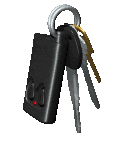 _or ... Head on Neck, Place For the last few weeks, I have been in a tizzy. More than usual. I am not sure why. Lots going on, but that in itself is not unusual. I am a million years older than I used to be, so that could be a factor, except, the series of things that have been happening are familiar…going into a room and forgetting what the hell for, asking the cats, but they don’t know either and so are of no help, none of this is new. Putting things down and then not finding them until they’re good and ready to be found, something I call “Reverse Kleptomania,” also par for the course for years. But today kind of takes the cake. I put together a handful of stuff to toss into the trash, grabbing my keys on the way out. I live in a condo, so this is standard procedure. We toss the regular trash down a chute in a special little room off the laundry on each floor. But I also had recycling stuff, so I would need to go down to the garage, as that type of trash goes into special containers. For security, we have to have our keys to open the elevator on the lower level. So far, so good. I’ve got everything held in such a way as to keep the keys and toss the trash. Carefully, I keep the keys in one hand as I toss some of the regular trash with the other, keeping the recycling tucked under one arm. Then, I carefully toss the other trash down the chute. Voila! Great work. Except, OMG, I’m not holding the keys. Did I toss them in with the second bunch of gar-bahge? Oh, no! I did, I did. Arrrgggghhhhh. How could I forget I was holding them? OK, OK. I know I’m a sieve head. So what to do? As I run back to the apartment to pick up an extra set of keys, thoughts come flying through my brain. Yick. I’m going to have to reach into the smelly mess of gunk. I just hope I can get to it without having to dive in. I remember that there’s been a ladder in the garage the past few days, for some ongoing repairs. I hold onto the ray of hope that it’s still there. When I get to my apartment, I decide to grab the broom, in hopes it will help me ensnare the keys without having to dumpster dive. I run back to the elevator and keep hoping the ladder is still there. Wow! It is. My luck expands. There is also a neighbor there who sees my expression, and asks, “What happened?” When I tell him, he says, “You know, you could always call a locksmith. It’s $70.” " Well, yeah, but those are my car keys, and a replacement costs $100 and has to be special ordered...it'll take days, and it’s the only one I have.” “No problem. I’ll help you,” he says with a nod. He carries the ladder over while I prop open the door to the dreaded dumpster. Oy, the odor. My valiant savior climbs up to the top of the ladder. “You can’t see a bloody thing in here. We need a torch. Do you have a torch?” Yeah, I remember, he grew up in England. “I do, but of course hadn’t thought to bring it down.” “You really can’t see any thing. Can you get the torch?” “Sure. I’ll be right back.” “No worries. I’ll wait for you.” Leaving the broom by the door, I turn to go. “Thanks so much!!!!” I race to my apartment, get the only flashlight I have, which throws out a very small light, race back down, hoping it will do. When I get back to the fragrant dumpster, I hand the light to my friend. “What is this? You can’t see anything with this…Wait…I see them….hold on….” He reaches over, without the aid of the broom, swoops down and comes back up, keys in hand. I ask, afraid to hear the answer, “Did they land on a dry spot?” “They’re cool. No problem. You’re very lucky.” He hands me the perfectly dry, perfectly clean, non-aromatic keys. I threw my arms around him, giving him a huge hug. “I can’t thank you enough!” “No problem. Have a great day! Don’t worry about the ladder. I’ll put it back.” Feeling saved once again in life, I happily return home. Am I really getting soft in the head with age, my biggest fear in life? Well, mayhap. But I also remember what my mother once told me. “You drop things because you forget you’re holding them.” I was 8. _ Certainly words such as “the” demand to be used more than once. That’s not boring unless they show up as every other word; they’re not eye-catchers. But if you have used a descriptive, colorful or unique term, for example you’ve described someone as “fascinating,” be sure you don’t use the word, in any of its versions, later in the same sentence or paragraph. You will soon disengage your reader.
Less Interesting: Old Weird Harold was the most fascinating kid on the block. For one thing, what kid would have a name that fascinated people like that? Way to go: Old Weird Harold was the most fascinating kid on the block. For one thing, what kid would have a name like that? (adapted, with gratitude, from a phrase by Footprints author, Kay Roberts) Less interesting: Old Weird Harold always wore a brown fedora on his head. Every time he took his fedora off, the young man bowed. Way to go: Old Weird Harold always wore a brown fedora. Every time he removed his signature head ornament, the young man bowed. *Excerpt from How To Write Your Memoirs...The Toolbox Edition, upcoming sequel to How To Write Your Memoirs...Fun Prompts to Make Writing...and Reading Your Life Stories a Pleasure! Have you got a pet paragraph you'd like to send us to show how you've avoided this potential reader turn-off? Please send it to us in a comment below. Thanks!!!! Thought I'd get back to posting some memoir writing tips. This one deals with a frequent issue many of us face when creating a memoir, or for that matter, any form of writing.
Do you find that a bunch of totally different adventures and people keep jumping into your thoughts as you’re trying to write a story? Don’t let that throw you into a tailspin. When you’re working on one chapter or idea and another crops up, just take notes on a separate piece of paper (or separate document if you’re on the computer). That way, you can get back on track quickly, yet not lose the “intruding” idea. And later, you’ll be able to develop and maybe incorporate that idea, too. This tool has been very helpful to me, and to members of my Footprints Writing Club. For example, one man, new to writing, is committed to getting his life story on paper, but at first he had a terrible time keeping to a narrative line. He wrote what happened clearly, in a matter-of-fact-based way, but in a rather stilted tone, devoid of feelings and tension. He also complained that ideas for other parts of his life kept coming up as he tried to write, and he would find it next to impossible to stick with the story he was working on. After a bit, trying this method of jotting down a note about a new idea, and then going back to where he was, his frustration level lowered dramatically, and his writing improved in equal measure. Now when he reads a segment of a new tale, rather than expecting to hear him wade through a rather detailed recitation of events without any plot, the class is eager to know what will happen next. And he feels much more comfortable while he writes. He’s even gotten very good at short fiction. Creating a fun story from a weird prompt is a new talent he didn’t know he possessed. Most of his writing is still carefully geared to “telling it like it was or is,” which is quite interesting in its own right; we his readers are learning about times and places we’d never have known about. But now that he can focus on storytelling, whether he’s writing fact or fiction, it’s a surprise and treat for us all to read or listen to new tales he weaves. The above tip is excerpted from my upcoming sequel, How To Write Your Memoirs, The Toolbox Edition.  From "Ina Hillebrandt, The Appliance Years" Those of you who know me may recall the days, a bit ago, when I dedicated my life to selecting, and then purchasing new appliances for my kitchen. Those were rarified times. I’d get up in the morning, brew coffee on my brand new Gevalia brushed steel coffeemaker, waltz over to the computer, and start the day’s search for the very best blender and food processor I could find, in brushed steel to match the lovely coffeemaker, at the best prices of course. It all started when I took my customary neighborhood two mile walk one Sunday morning. As I rounded the bend on the homeward stretch, I saw what can only be described as Stuff. Laid out handsomely at the mouth of the driveway of its large apartment complex, it was Stuff nonetheless. What caught my eye specifically was a small Pakistani rug with a bit of my favorite color, peacock blue, woven into its pattern. Perfect, I thought, for an elegant doormat I’d been thinking I needed. As I approached the rug, I also saw other items spread out along the sides of the driveway that piqued my interest. But before even considering these, I asked a young woman who seemed to be one of the sale’s hosts, “How much for this rug?” “One dollar,” she told me. Thrilled, I immediately said, “Sold!” Occasionally I am quite decisive. With this super purchase under my belt, I began to roam, eagle-eyed, about the various items on display. There was a set of 7 foot tall pine bookcases, another Item I’d been thinking I needed to house the overflow of books at my place, a waffle iron/grill for my daughter, several attractive wooden planters, and some lovely baskets. Total cost: about $45! But the prize was something I’d never seen before. A sleek, sophisticated brushed steel blender and food processor, all in one unit! With about a zillion tantalizing attachments fit into the curved base. The design was by Italian masters, wonderful, a kind of swooping S curve with the blender on one end and food processor on the other. “Does this work?” I asked the lady who was the seller of this unique cooking instrument. “Of course!” she assured me. The price? Are you sitting down? $10.00. I could hardly believe my luck. I had a blender, but it was vintage ‘80s and a gold color, as was my food processor, which I kept in a cabinet and never used. But here everything would be in one place, taking up little counter space vs. that required by two separate pieces, beautiful to look at in the bargain, and the requisite brushed steel. “I’ll take it!” I said happily. Given I had a lot of little things to cart back to my place, the blender/food processor/planter/bookcase seller offered to loan me her wheelbarrow, which was perfect. I was to bring it back when I returned for the bookcases. One of the fellows on hand would walk them the block and a half to my place using a hand cart when he was free later, with me guiding him. As soon as I got home with the smaller goodies, I couldn’t resist. The blender/processor were a bit bespotted by food particles, and I couldn’t wait to get the whole thing cleaned up so I could try it out. A half hour and a few cuts later (those blades were indeed sharp), everything sparkled. I plugged the unit in, and pushed the on button for the blender. Silence. Same for the food processor. I rearranged both units, thinking I’d perhaps not got them on snugly enough or in quite the right spot. Pushed the buttons, one at a time again. Nothing. Well, I thought, maybe there’s a trick to it. Thinking logistically, I hurriedly emptied a beat up bookcase I planned to toss now that I had the new one, packed up the fancy appliance, put it into the wheelbarrow and back to the sale I went. Coming up to the previous owner, I said, “Not to worry! You gave me such good prices on everything I wouldn’t dream of returning this, but I can’t seem to get the blender thingie to turn on. Can you show me how you put it together? Maybe I’m doing something wrong.” The lady smiled and showed me how to do it, which looked to be the same procedure I had followed. “Well,” I said, “I’ll take it back home and try again. Thanks so much!” Ever hopeful, I escorted the shelf-pusher back to my place, we put the bookcases where I wanted them, took the unit I’d emptied earlier to the curb to be picked up by anyone who wanted it. Then, bidding adieu to the nice man, I hastily went back inside. And back to the Italian. Which, once reassembled, again failed to work. Frustrated, I went online to see if I could find out anything further about getting this one to work, or maybe purchase a new one if the price were right. It was then I found that 9 out of 10 people who had bought one of these hated it and would never recommend it. Turns out there was a trick to making it work, but it wasn’t foolproof, and even if the reviewers got it to go on, the motors would burn out within a year and you could not get them fixed. Rats! I thought. A few other words came to mind. However, not one to remain defeated, I began my search for the perfect all-in-one. It became clear pretty fast that there was no such thing. At one store, the Cuisinart people told me there was a reason no one else makes a blender and food processor together in one unit, with two separate stands aboard – they don’t work! Yes, there were compromise units, with smaller pitchers that tried to accommodate both types of cooking needs on one stand. But if you got one of these, you sacrificed capacity, flexibility or power. After two full weeks of daily checking, I finally found a great buy on a huge Kitchen Aid food processor. Not brushed steel, it had a shiny stainless base, but it would look good with the coffeemaker, and was top of the line in terms of performance. The real splurge would be the blender. A gorgeous Breville. European design, most powerful motor, it was just simply the most beautiful appliance I’d ever seen. So, I shopped and shopped for the best price. Finally, when it went on sale for almost $100 less than its usual price I raced to the store to grab one. And ever since purchasing the beauty, I never tired of looking at it. The lid has a loop for a handle, giving it a distinctive appearance, and the base is a beautiful tall pedestal of brushed steel. It zoomed into action when called upon to perform, quickly whipping up guacamole, morning smoothies and other sauces and mixes. A few weeks ago I started to experiment with blender ice cream. Using crushed ice, frozen fruit chunks and skim milk, plus vanilla and Stevia, I could create delicious yet low fat and calorie-trimmed treats for myself, and then a group of friends at a dinner. However, the blender was not happy. She began to argue with me until one night when I was whomping up a chocolate cake batter to pour over pears in a fluted baking dish, she started smoking. I turned her off of course, and took out the batter, blending it with a spatula as best I could. The cake? Perfect. The Breville? Dead. Even after resting, she would not start again. I felt totally bereft, and betrayed. So, I got a new baby -- the Ninja. With three blades at different levels on the removable stem, it promised to be an even better performer than the Breville, which though I loved her dearly, was a bit of a pain to work with -- heavy (glass vs. plastic pitcher on the Ninja), and you always had to take off the bottom, which screws and unscrews in directions opposite those in the U.S., a thing I always had to think about. And whatever was under the blade at the bottom would be hard to scrape out. The Ninja’s bottom is easy to get to so there should be less waste, I figured. At the counter when trading in the European work-of-art-cum-blender, I told the sales rep how sad I was at its passing. He asked if I’d thought of just trying a different Breville. Maybe you got a bad one, he suggested. After all, isn’t the Breville the very best on the market? He said I should try the Ninja if I really wanted to, then feel free to bring it back if not satisfied, and try another Breville. After a few days, I find the Ninja’s a snap to use. It fits on its base easily, is light to pick up and take apart for cleaning. That’s very neat. And while it isn’t as elegant, it’s OK to look at. But ya know what? There are tiny ice particles that don’t quite get exploded by the Ninja… |
By Ina
Hi, and glad to see you! My blog features memoir and fiction writing tips for you out there aiming to create enchanting memoirs and flights of fancy of your own; new "Pawprints," those close encounters of the furry kind, by moi; and topical comments as they bang on my head to be written. Plus: videos featuring talented authors I'm privileged to work with, reading live, Coming...your life stories, here. Got one you want to share? Use our form to be considered. Archives
September 2022
Categories
All
|
Website, stories, videos, photos, audios and tools © 2010 Ina Hillebrandt ꟾ Updated regularly
Revised 2021. Updated March 2022.
Some stories copyright by individual authors. Please do not share any material as is, or altered, re-packaged in any way. Short excerpts for review purposes only permitted. For other reprint information, please contact us.
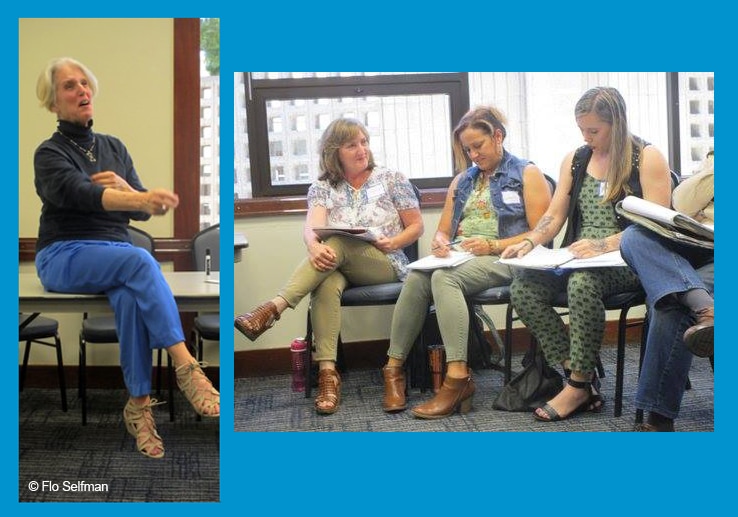
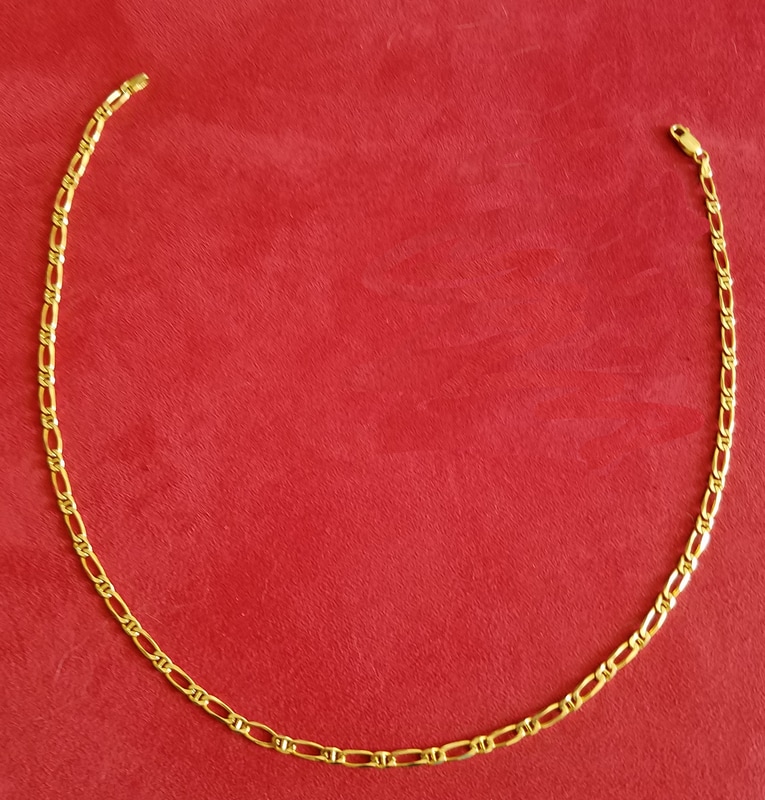
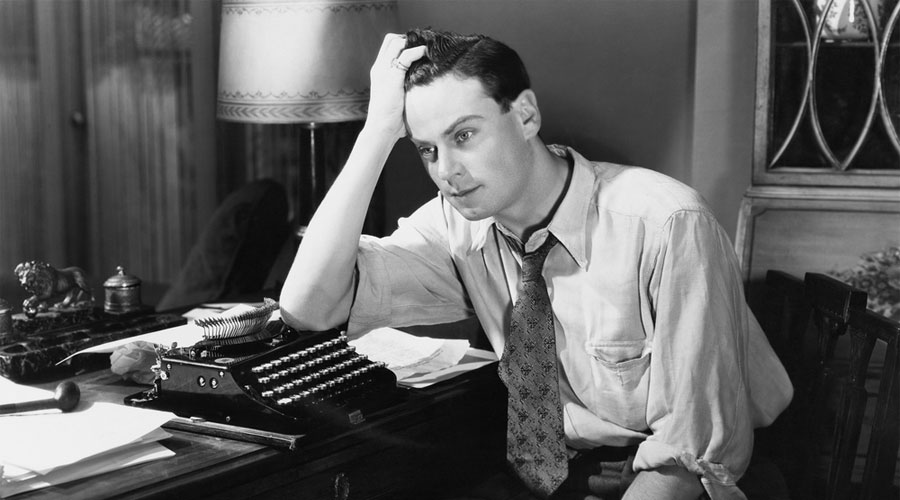

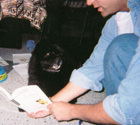
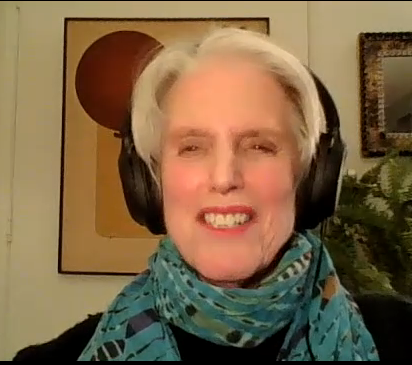
 RSS Feed
RSS Feed
